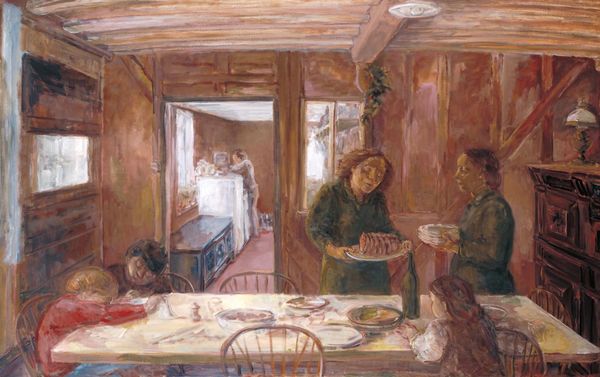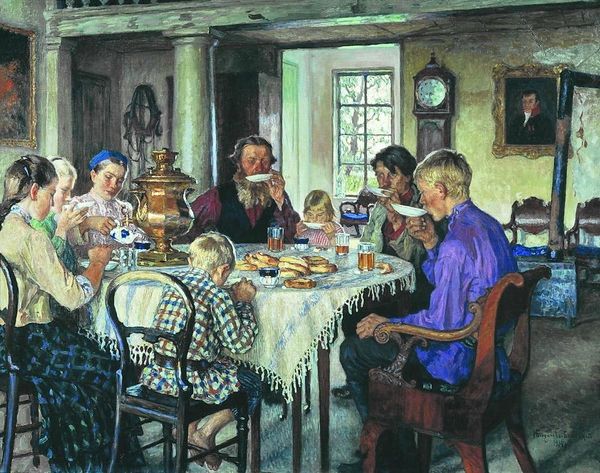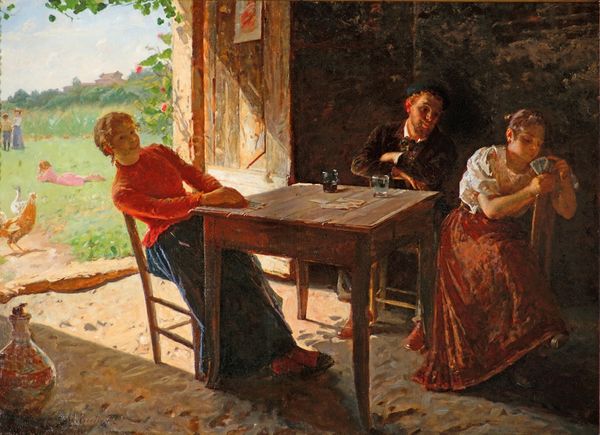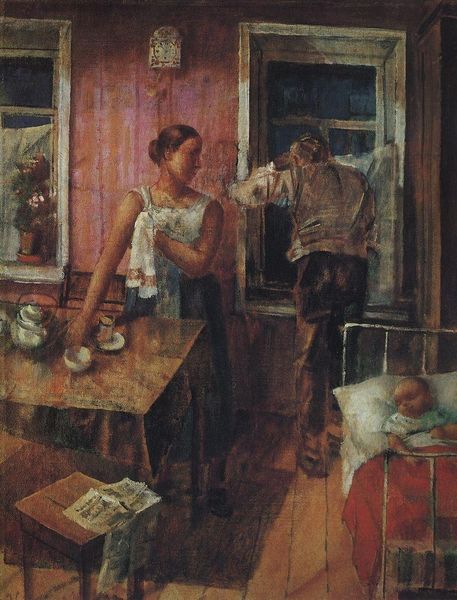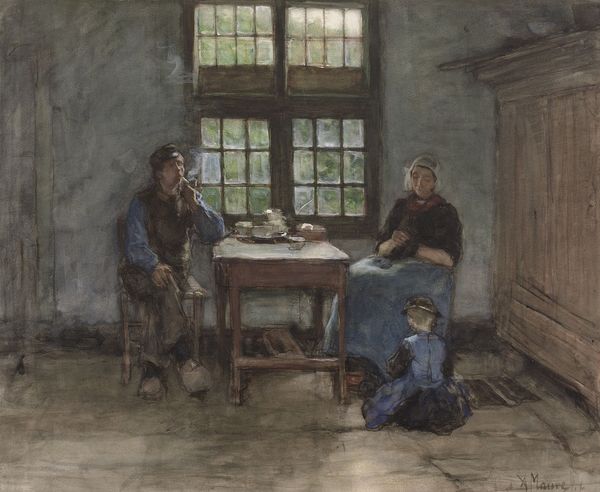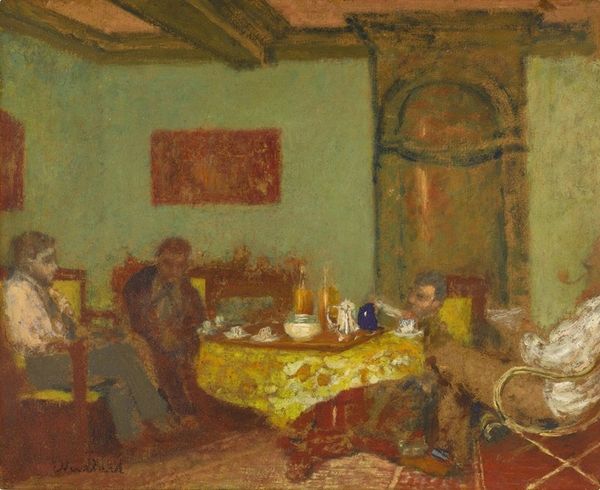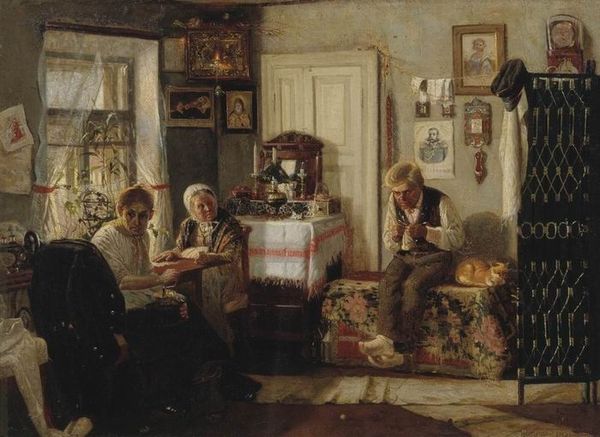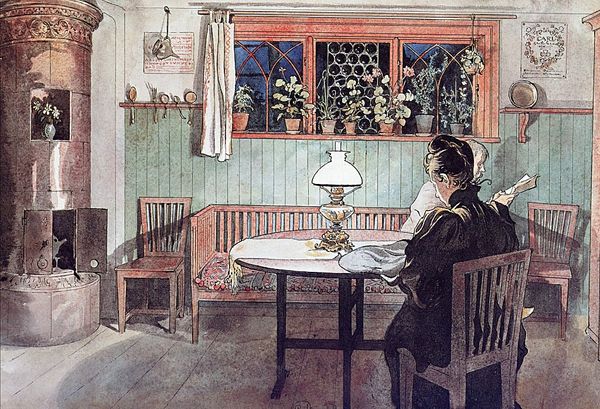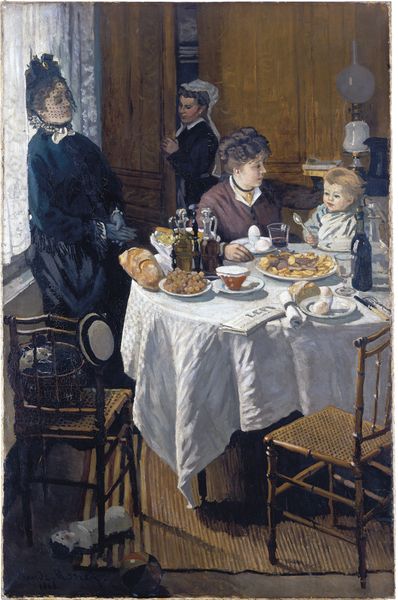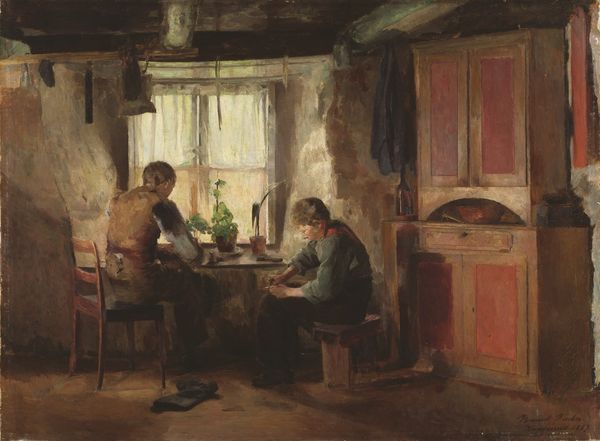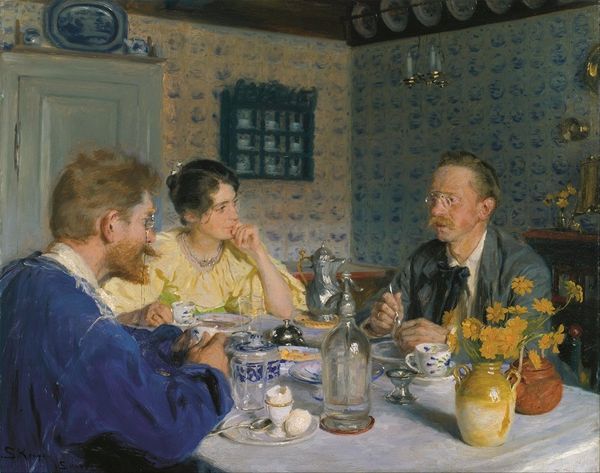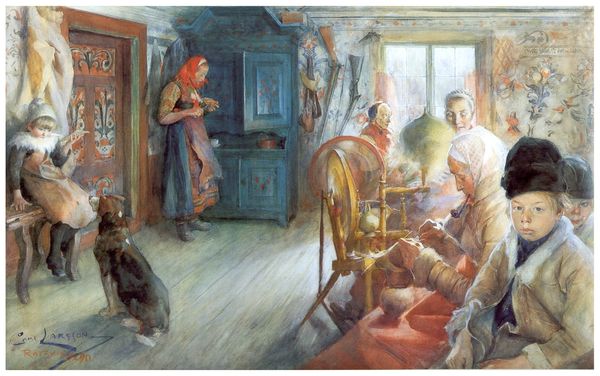
Coachman at Traktir 1920
0:00
0:00
boriskustodiev
Apartment Museum of Joseph Brodsky, Saint Petersburg, Russia
Copyright: Public domain
Boris Kustodiev made this watercolor painting, "Coachman at Traktir," in Russia, during the 1920s. Here, we see two figures drinking tea inside a roadside inn, or “traktir.” The scene, with its patterned wallpaper and laden table, recalls a comfortable, pre-revolutionary world. But Russia in the 1920s was anything but comfortable. After World War I and the ensuing Civil War, the country was in ruins. Artists who had embraced the revolution now struggled to adapt to the new Soviet order and its emphasis on socialist realism. Kustodiev, however, retreated into nostalgic images of Russian folk life. As art historians, we might ask if this painting subtly critiques the new regime by idealizing a lost way of life. Or does it simply offer a harmless escape from the harsh realities of the present? Examining the painting's exhibition history and contemporary reviews may reveal a more complex picture. Ultimately, it’s the social and historical context that illuminates the artwork's meaning.
Comments
No comments
Be the first to comment and join the conversation on the ultimate creative platform.
